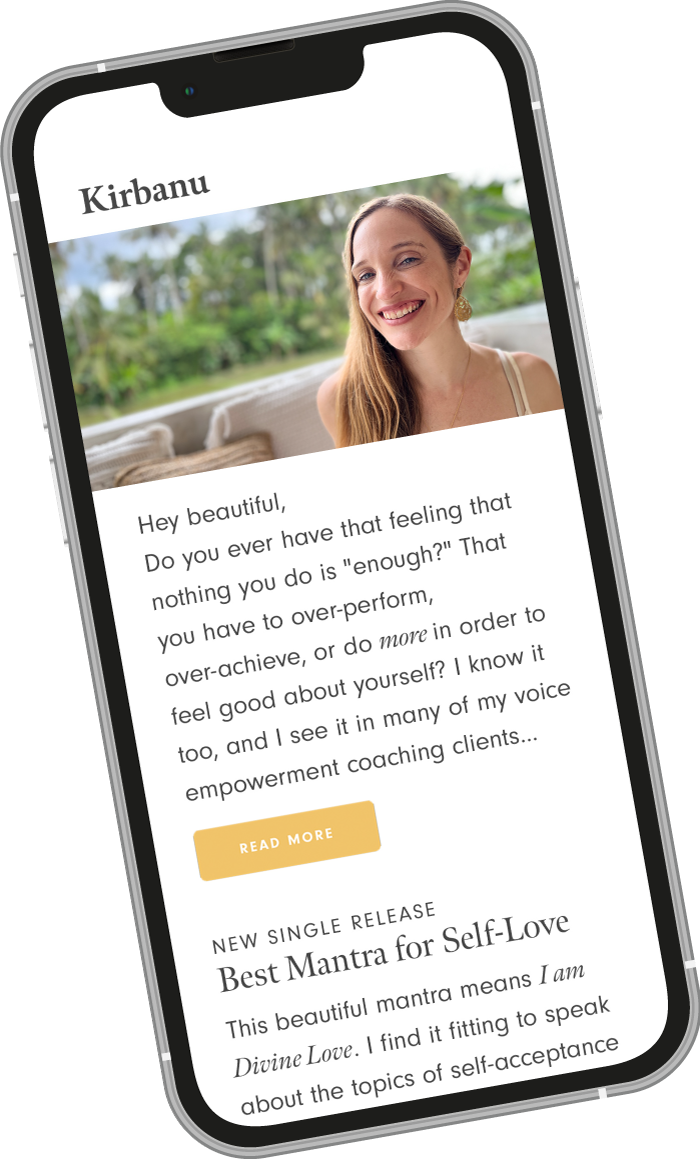Finding Your Voice
Unlocking the Full Power of Your Vocal Potential
Many of us barely tap into the full strength of our voice, unaware that we possess much more vocal power, range and depth of expression within us. We somehow think that the voice we have is the one we’re stuck with, even if we feel that when we use this voice, it doesn’t really sound like us. That the voice you use, the one others hear from you, doesn’t represent the way you experience yourself from within. There’s a misalignment. From screaming ferociously as a baby, something got shut down, blocked, or lost along the path into adulthood.
Finding your voice is about discovering this untapped potential and allowing yourself to express fully, freely, and authentically. So, what does it really mean to uncover your authentic voice? It’s more than just speaking—it’s about accessing your complete vocal ability, connecting to your true self, and learning to express yourself with confidence.
In this blog post, we’ll explore the journey to finding your voice by understanding the mechanics of vocal production, reducing tension in your body, and incorporating exercises that help you unlock the full range of your voice. Whether you want to enhance your communication skills, improve your singing, or simply feel more confident speaking, the steps outlined here will guide you towards vocal freedom and self-expression.
The Physical and Emotional Barriers to Finding Your Voice
Finding your voice is not just about a sound that comes out of your mouth—it is deeply connected to your body, emotions and mind. Vocal production involves a complex interaction between your brain, nervous system, respiratory system, and articulation system. Any tension, blockages, or restrictions in these areas can stop you from expressing yourself fully.
The Impact of Physical Tension
Physical tension is one of the most common barriers to finding your voice. Here’s how tension can affect your vocal expression:
Postural Habits: Poor posture can create tension throughout your body, restricting your breathing. Since your voice relies on breath to function, any physical tension can limit the air pressure supplied to your vocal cords through breathing, thus limiting your vocal expression.
Jaw Clenching: Tension in the jaw can dramatically affect your voice. Just like a domino effect, jaw tension can lead to tension in your shoulders, neck and tongue. This can place your larynx under tension, and through it your vocal cords. Left unchecked, this kind of tension can lead to hoarseness, discomfort, or even a loss of voice.
Breath Control: Shallow breathing, where you primarily breathe only into the top part of your chest and engage your shoulders as you do, or holding your breath, can limit your breath potential. This reduces the air pressure required for optimal vocal cord function, preventing you from accessing the full power of your voice, leading to a weaker, less impactful sound.
Start the Free Voice Course Now!
Unlock your most authentic voice and use it with confidence, power & impact in any situation.
The Emotional and Psychological Barriers from Finding your Voice
Emotional and psychological barriers can also prevent you from finding your voice. Negative self-talk, fear of judgement, and limiting beliefs can all contribute to a suppressed voice. When you doubt your ability to speak up or fear how others will react, your body responds by tightening, which in turn affects your voice. In my opinion, it’s no wonder so many of us carry jaw tension. Just think about all those held-back words…
Finding your voice, it’s essential to address both the physical, emotional and mental (the psychosomatic) barriers that may be holding you back. By doing this, you can release tension on all levels of your being, build confidence, come into a more authentic relationship with yourself, and fully express yourself through this newfound understanding and integration.
How to Start Finding Your Voice
Finding your voice is a journey that requires both awareness and practise. Here’s how you can begin:
1. Understand How Your Voice Works
In Finding your voice, it’s important to grasp how it functions mechanically. Your vocal cords, breath, and resonance all work together to produce the sound heard as “you voice.” Getting to know how these elements interact will give you a clearer picture of how to use your voice effectively.
Vocal Cords: Located in your larynx, your vocal cords look like a V- shape. They’re connected at the front and separated at the back. They are not static, rather they move a lot during vocalisation.
Depending on the pitch you use, they can vibrate together up to more than 1,000 times per second. The way they come together to vibrate is controlled by air pressure. When the air pressure at your vocal cords is insufficient (due to poor breathing) they are unable to vibrate together optimally.
This can lead to a number of vocal problems including, but not limited to, hoarseness, burning or scratching sensations in the throat, a sense of a lumb or frog in the throat, vocal instability, and even vocal loss.
Breath: Your breath provides stability for your voice. It is what creates the air pressure needed to support optimal vocal cord vibration. By engaging in deeper, yogic belly breathing you enable your body to take in sufficient air.
Through this kind of breathing you can better control the movement of your diaphragm – it’s speed of movement and how deeply it descends on inhaling. This again helps to optimise the air pressure hitting your vocal cords on vocalisation.
Resonance: The term resonance refers to how one vibrating object impacts another. It also refers to what happens to sound (molecules in vibration) as it comes into contact with other objects or surfaces.
You are a resonant being. Your vocal cords create a sound vibration in you. This sound then comes into contact with other parts of your body – your mouth, your larynx as an example. These surfaces then begin to resonate (vibrate) at the resonant frequency of the pitch your vocal cords produced.
To say this in a simpler way: through the principle of resonance your body begins to vibrate at the pitch (frequency) your vocal cords produce. Meaning, when you increase your sensitivity to resonance, you can actually feel the vibrations everywhere in your body.
That said, for optimal vocalisation – to speak or sing with ease – it’s best to “think you voice up.” By becoming aware of the resonance happening in your face and, especially in your skull, and by learning to direct your vocal vibrations more intentionally into these spaces, you will create a fuller, more powerful sound.
2. Reduce Physical Tension
As you can see, your voice is created in you, through you. Because of this, physical tension can severely limit it. In finding your voice, and to create more inner space for its free flow, you need to release tension in key areas such as your jaw, neck, and shoulders. Try these exercises to get started:
- The Chewing Cow Exercise: This one helps relax your jaw and tongue and warms up your lips.
- Check your posture. Make sure you’re aligned correctly.
- Imagine you’re a cow chewing hay. Open your jaw wide like in a yawn, then bring your lips together like you want to give someone a big kiss. Let the movements be fluid and exaggerated.
- If you feel pain in your jaw, please respect your boundaries and avoid pushing beyond your comfort zone.
- Practise this for about a minute and notice how your jaw feels—looser, more relaxed, and free.
- Baby Blowing a Raspberry: This exercise helps relax your tongue, jaw, and lips while warming up your vocal system.
- Relax your tongue on the floor of your mouth and ensure your teeth are not clenched.
- Blow air out through your lips, creating a soft, buzzing sound—like blowing a raspberry.
- If you struggle to get this to work, try pressing your index fingers into your checks as you breathe out.
- Practise this to release tension in your jaw, neck, and lips.
- Vocal Cord Trills: This exercise helps prepare your vocal cords by warming them up and increasing their flexibility.
- Take a deep breath and make a rolling “M” sound, starting from a low pitch and gradually moving to a higher pitch.
- Roll your voice from low to high and back down again, feeling the vibrations in your vocal cords.
- As you do this imagine that you have a potato in your mouth. Your tongue is lying on the floor of your mouth whilst you create the sound.
- Let your sound be gentle and soft rather than loud and strained.
3. Build Emotional Awareness
Finding your voice also requires emotional awareness. Watch for any thoughts or feelings that pop up when you speak. Are you hesitating due to fear or uncertainty? Do concerns about others’ opinions hold you back? Recognizing these emotional responses is key to addressing and overcoming them.
Becoming aware of these emotional barriers is crucial. It’s the first step in addressing and overcoming them so you can express yourself more freely. To help release emotional blocks, try practices such as meditation, journaling, or working with a coach who can guide you through the process of finding your voice.
If you have questions, I recommend booking in a free 30-minute Voice Empowerment Discovery call with me, where I can give you direct feedback to your vocal challenges, wishes and even give you some additional helpful exercises for finding your voice.
4. Harness Resonance
Once you’ve released physical tension and started building emotional awareness, it’s time to focus on resonance. As mentioned, resonance is what happens to sound in space, and to sound as it hits other surfaces.
When your vocal cords vibrate, the sound doesn’t just stay in your throat—it vibrates everywhere, but especially resonates in the cavities in your head and chest. When you can intentionally tap into this source, you can give your voice more richness and depth.
- The Importance of Resonance: Resonance is a key to finding your voice it is contributing factor to giving your voice its colour, power and presence. Without resonance, before finding your voice can sound flat or weak. By learning to use resonance intentionally, you can create a fuller, more impactful sound that resonates with your listeners.
- Resonance Exercise:
- Relax your shoulders, jaw, and tongue. Make sure your posture is aligned. If you’re not sure what I mean by this, take a look at the video below for correct posture when vocalising.
- Make an “M” sound while ensuring that your jaw is relaxed and your tongue rests on the floor of your mouth.
- As you hold the “M” sound, gently touch the sides of your nose and lips with your index fingers. Feel for the vibrations. When you’re using resonance correctly, you should feel a gentle buzzing in these areas.
- Now place your hand on the crown of your head. Try to become aware – feel – the resonant vibrations from your voice in your hand.
- Practise this exercise a few times to become more aware of how resonance feels in your voice.
Start the Free Voice Course Now!
Unlock your most authentic voice and use it with confidence, power & impact in any situation.
Final Thoughts: The Power of Finding Your Voice
Your voice is one of the most powerful tools you have for communication, self-expression, and personal transformation. By finding your voice, you can unlock new levels of confidence, clarity, embodiment and presence.
You’re able to express your needs, speak your truth, and communicate with authenticity and ease in any situation, even the difficult ones. Whether you’re speaking in front of a crowd, expressing yourself in a personal relationship, or simply enjoying the sound of your own voice, finding your voice is a transformative experience that can enhance every aspect of your life.
Take the time to explore your voice, release any limitations, and let your true sound be heard. The journey to finding your voice is transformative—embrace it and uncover the vast potential within you. If you need support from a professional on this journey, consider booking in a free 30-minute Voice Empowerment Discovery call with me, where I can give you direct feedback to your vocal challenges, wishes and even give you some additional helpful exercises for finding your voice, now.
Podcast Episode #51
What does it mean to have voice power?
Your voice is one of the most powerful tools you have to create change in the world around you. Learning how to master the power of your voice can have a significant impact on how other people experience you and the way your message is received.
So, in this podcast episode, I explain exactly what voice power is, and I share some helpful tips for how you can access yours!
Finding your Voice
How to Find it?
Connecting to the power of your voice doesn’t just mean understanding how to alter your volume, tone or pitch, but rather, it means consciously embodying your vocal expression as you speak. It means being completely aware of your vocal production and the energy that you’re sending into the world through what you say, and how you say it.
For example, by speaking with confidence and conviction, you can capture the attention of those around you and leave a lasting impression. Or by channelling love and tenderness, you can help others to feel safe and secure around you. It’s all about how you say, what you say. Your intention matters 100%
One of the easiest ways to experience your true vocal power is through toning whilst channelling (connecting to) different emotional states. For example, if you want your voice to sound confident, then imagine confidence. It helps to use the body here. So for confidence, try “becoming big.” Expand your chest out, a little like a pigeon, and stand tall.
Or, if you’d like to have a tender voice, then imagine feelings of tenderness within you. Perhaps place both hands over your heart and feel how this gentle connection makes you feel. Allowing your voice out whilst consciously channelling these states helps you access your true voice power!
And remember, whether you’re singing your heart out in the shower, chanting mantras or repeating affirmations to boost your confidence, your voice has the power to transform the way you feel, improving your mood. So take a deep breath, find the power of your voice, and use it to boldly share your message with the world.




